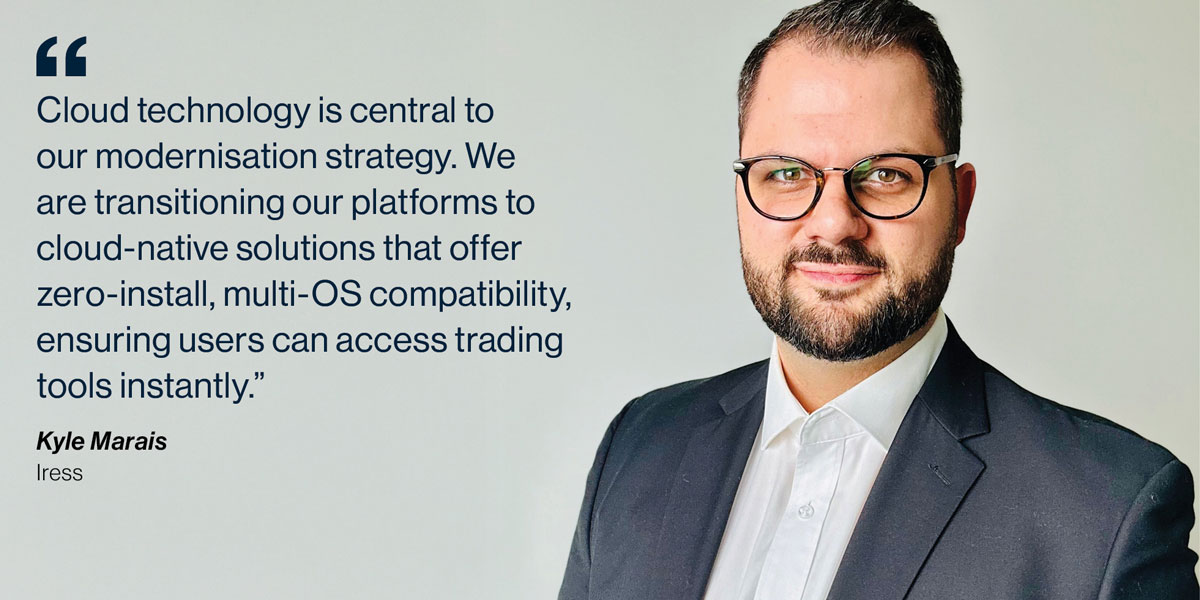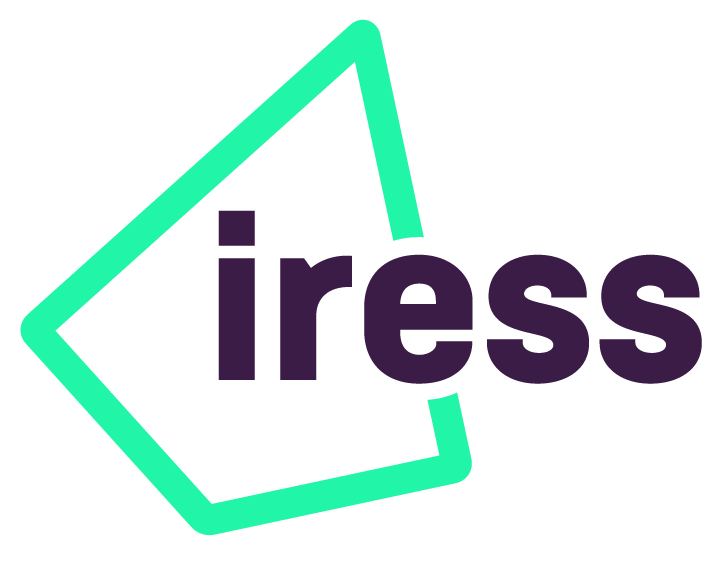Global Trading spoke with Iress Product Manager – Trading, Kyle Marais, about the challenges legacy platforms pose for trading desks, and how interoperability and cloud technology are shaping the future of trading.
What challenges are capital markets and trading desks facing due to legacy platforms?
Legacy platforms were often built to support single-asset, region-specific trading. However, today’s capital markets demand multi-asset support, global reach, and the ability to adapt quickly at scale.
Disjointed workflows arise when firms operate with multiple data sources and proprietary systems that do not integrate. As a result, traders frequently switch between different interfaces, tools, and platforms to complete a single trade creating inefficiencies that legacy systems struggle to support. Limited integration with modern technology makes it difficult to onboard new trading venues, while rigid workflows restrict operational firms’ ability to adapt to market changes.
These fragmented workflows are further compounded by siloed data, further undermining operational efficiency. Critical market, order, and trade data remains scattered across disconnected systems, preventing firms from achieving a unified view across the full trading lifecycle. Legacy formats require extensive transformation, hindering data-driven decision-making and limiting the adoption of AI and analytics.
Operational costs continue to rise as aging systems demand heavy maintenance and custom integrations. Expanding into new asset classes or regions requires complex development work and manual processes, both of which slow speed to market and innovation. Legacy infrastructure also lacks the resilience to withstand market volatility, increasing the risk of downtime.
How can these barriers be overcome?
To overcome these challenges, firms need to shift away from rigid, monolithic systems and adopt flexible, integrated trading solutions. This allows them to keep pace with evolving market demands while modernising their infrastructure, without disrupting critical trading operations.
A key enabler of this transition is interoperability. Instead of undergoing full system replacements, firms can integrate modular, API-driven components that connect existing infrastructure with modern trading venues, asset classes, and tools. This incremental approach minimises disruption, increases flexibility, and allows firms to evolve their trading architecture at their own pace.
Cloud-native technology offers a solution to enabling this transformation. By moving away from on-premise infrastructure, firms can reduce hardware costs, accelerate feature deployment, and improve system resilience. Continuous updates strengthen security and functionality, while elastic infrastructure supports scale, and adaptability, promoting self-healing during periods of market stress.
Breaking down data silos is another crucial step. Cloud-enabled data hubs, open APIs, and industry standards such as FDC3 enable seamless data-sharing across trading, risk, and compliance functions. By unifying data across departments, firms can improve analytics, reporting, and decision-making. Providing a consolidated view of market and order data allows trading desks to operate more efficiently and with greater confidence in their insights.
What is Iress’s approach to supporting this evolution?
At Iress, we’re enabling seamless integration between Iress applications, third-party tools such as CRM platforms and pre- and post-trade analytics, as well as proprietary front ends and custom content. This ensures that trading desks can create a tailored desktop experience which combines multiple technologies without disruption.
Cloud technology is central to our modernisation strategy. We are transitioning our platforms to cloud-native solutions that offer zero-install, multi-OS compatibility, ensuring users can access trading tools instantly. Leveraging cloud infrastructure also enables faster expansion into new regions and seamless scalability, without the need for additional hardware.
As part of this evolution, our product suite is also advancing. Iress Pro is evolving into a modern, cloud-based platform with modular widgets and improved tooling, ensuring that traders benefit from new capabilities without disrupting existing workflows. Iress EMS is a simplified, cloud-native execution management system designed for buy-side firms, unifying the user experience across asset classes, trading venues, and workflows. Iress’ cloud-native FIX Hub enables firms to access global markets and trade multiple asset classes through a single, frictionless connection, simplifying execution and connectivity.
How do you expect the demand for interoperability to evolve?
The demand for connectivity is only going to increase as market structures evolve. The rise of 24/5 trading, T+1 settlement, and alternative trading venues signals a shift toward an always-on, globally connected market. To keep pace, trading systems and workflows will need to communicate across asset classes, geographies, and platforms. Interoperability will be the foundation that enables firms to operate in real-time, eliminating inefficiencies and ensuring smooth cross-market execution.
Cloud technology is also levelling the playing field for mid-tier and growth-focused firms. Previously, access to broker networks, liquidity providers, and global exchanges was restricted to large institutions with extensive resources. Cloud-based infrastructure is now removing those barriers, allowing mid-tier firms to integrate faster, onboard new trading venues more easily, and connect with the broader trading ecosystem without the high cost of custom development. As the need for connectivity and speed grows, cloud-technology and interoperability will be a key enabler for firms looking to compete on a global scale.
Regulatory scrutiny is another factor driving the demand for interoperable systems. Frameworks such as DORA and APRA CPS 230 are reshaping operational resilience expectations for financial institutions and their third-party providers. Firms must now implement continuous risk management, strengthen vendor oversight, and meet heightened compliance standards. Cloud adoption and interoperable architecture reduce reliance on legacy systems, supporting continuous testing, impact tolerance, and stronger governance. By enabling better system monitoring, testing, and auditing, interoperable technology will help firms meet regulatory requirements more efficiently and with greater confidence.




